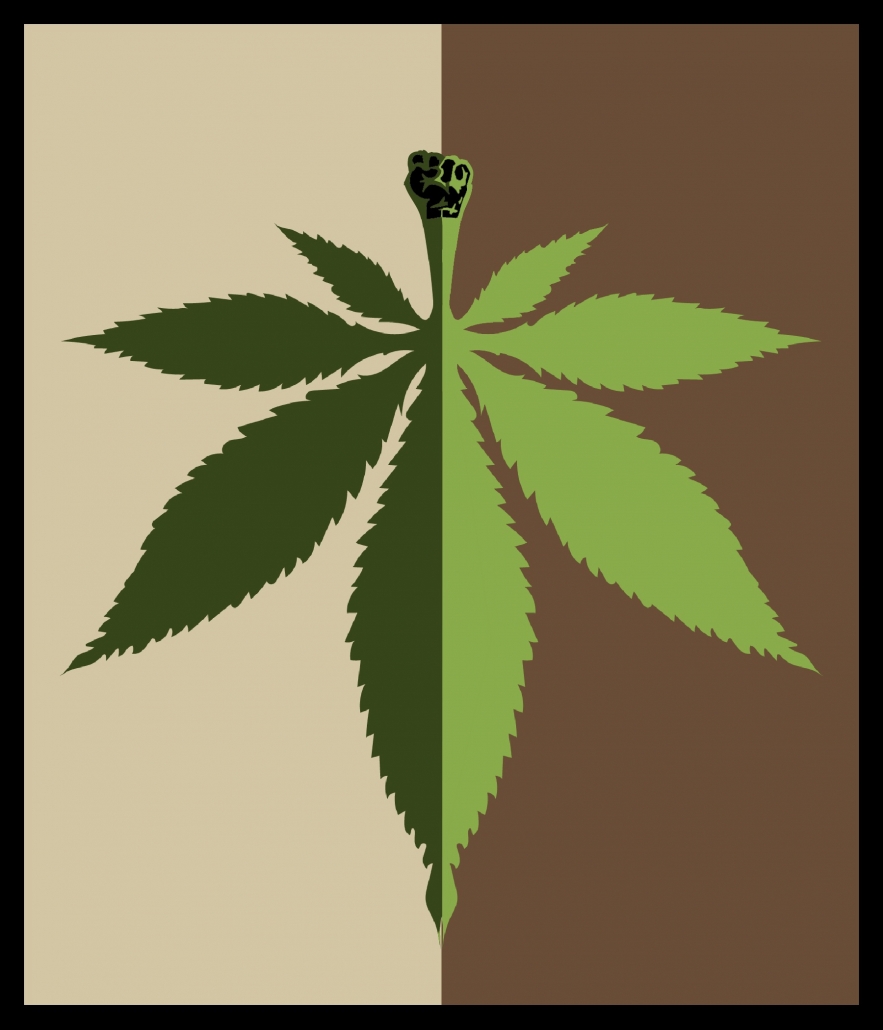
You’ll be able to’t speak about mainstream American pop culture with out discussing the appropriation of Black pop culture into the hegemony. It’s well known that the previous wouldn’t exist if no longer for the blueprint of the latter.
Hashish and its use, like maximum cultural phenomena, become popularized in The united states through immigrants of colour in enclaves, predominantly other people from the Caribbean who settled in New Orleans and other people fleeing from the Mexican Revolution.
Weed’s historical past is inextricably connected to a posh, multi-faceted dating with race, slavery, colonization and criminalization. Whilst the plant is assumed to have originated in Central Asia in 500 B.C., it was once later unfold to the Center East and the Americas via industry and imperialism. Hashish was once used to placate slaves and was once additionally the root for hemp plantations within the American colonies.
First imposed on Black communities within the Caribbean, specifically Jamaica, hashish was once quickly followed recreationally, turning into a cultural and non secular staple. Then, with the arriving of Jamaican immigrants within the early twentieth century and the advent of distinct cultural districts like Storyville in New Orleans, jazz was once born.
Hashish helped the Jazz Age flourish, serving as a conduit for creativity, track manufacturing and function. The 1920-30s noticed the beginnings of hashish slang and cultural building, in particular in Black communities. Joints have been offered outdoor tea pads or hashish bars. Musicians would remove darkness from on tea, reefer, grass — codes for hashish, because the drug was once vilified nationally and at the cusp of criminalization — making a song tributes to the substance.
Jazz musician Cab Calloway, who continuously frequented New York Town’s well-known Cotton Membership, sang many odes to hashish, together with “Reefer Guy,” which contains traces like “If he trades you dimes for nickels / And calls watermelons pickles / Then you recognize you’re speaking to the reefer guy.” Blues singer Trixie Smith recorded the long-lasting hashish tribute “Jack, I’m Mellow,” which is featured because the intro tune at the since-canceled Netflix display “Disjointed.”
Louis Armstrong, arguably essentially the most well-known jazz musician of all time, was once a well known viper, the identify given to jazz musicians who smoked hashish (after the hissing sound produced whilst breathing in smoke). Armstrong first attempted hashish — which he known as “the gage” as was once not unusual slang on the time — within the Nineteen Twenties and used the substance all through his occupation, ahead of performances and recordings.

Whilst his hashish use was once debated and rumored for almost all of his occupation, Armstrong sooner or later spread out about his love affair with weed to biographer Max Jones close to the top of his lifestyles, explaining that he needed to give it up because the Prohibition Generation dawned.
Armstrong was once an ardent supporter of hashish’s medicinal and leisure advantages and was once as soon as jailed for 9 days in Downtown Los Angeles Town Prison after detectives stuck him smoking at a parking storage (occasions haven’t modified a lot, huh?). There’s even a legend that then-Vice President Richard Nixon by accident smuggled hashish into the U.S. for Armstrong after announcing he didn’t have to move via customs (glance it up, it’s hilarious).
Recognized for its time-slowing results, hashish modified jazz musicians’ belief of their very own performances, reducing their inhibitions and permitting them to experiment creatively — enjoying with beats, sounds and rhythm. Jazz, then, temporarily become the hallmark of infectious, dance-inducing and joy-filling track.
Tune psychologist Daniel Levitin wrote in his e-book “The International in Six Songs” that tetrahydrocannabinol, referred to as THC, the psychoactive compound in hashish, disrupts non permanent reminiscence and permits musicians to be absolutely within the second, permitting them to hook up with their track and 0 in on each and every notice they play.
Breaking obstacles all over the Jim Crow Generation, Armstrong closely influenced pop culture for many years to return. Whilst politicians demonized hashish and jazz, which they known as “Satanic” — and through affiliation its musicians — Armstrong’s track ruled not unusual American family radios.
Black activists have traditionally been at the vanguard of hashish tradition and the pot revolution, as evidenced through Armstrong and different jazz vipers. Now, the mantle has been handed to influential hashish business figures like Snoop Dogg, Wiz Khalifa and Whoopi Goldberg, who paintings to empower their communities via weed entrepreneurship.
Novices like Hope Wiseman, the youngest Black dispensary proprietor at 25, proceed this pattern, as do Dasheeda “The WeedHead” Dawson and Mary Pryor, two outstanding Black feminine hashish marketers and advocates. Pryor, who created the schooling company Cannaclusive with two different girls of colour, hopes to handle the loss of variety inside the burgeoning business.
In order you experience hashish lately and for lots of days to return, acknowledge that hashish has been wielded as a weapon towards Black and brown communities — first as a device for enslavement, later as one way of criminalization and now as a way of disenfranchisement, gentrification and cultural appropriation.
Hashish is inherently intertwined with Black historical past, and it’s crucial to reopen up areas inside the business, our mainstream tradition and society for Black creatives and marketers to develop and reclaim what was once denied and stolen from them.
Natalie Oganesyan is a junior writing about weed tradition and politics. She could also be the Affiliate Managing Editor on the Day-to-day Trojan. Her column, “To Be Blunt,” runs each and every different Friday.














